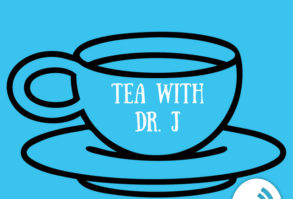John Dewey writes in The Public & its Problems:
To learn to be human is to develop through the give and take of communication an effective sense of being an individually distinctive member of a community; one who understands and appreciates its beliefs, desires and methods, and who contributes to a further conversion of organic powers into human resources and values. (p. 154)
In today’s always-on society, we have lost the art of the give-and-take of communication. Instead, we have become a society of reacting quickly with an opinion to any event and then attacking anyone’s opinion that differs. We take out our cell phones, laptops, and tablets and as long as there is Wi-Fi– we instantly become our own media outlet.
In today’s world, young adults did not grow up reading letters to the editor where people took time to write longer prose than 140 characters. In today’s techno-world, we are losing the critical thinking/listening skills that help us assess a situation to its full extent. In today’s world, people grab their phones to share their opinions without gathering sources to back up their claims. Facts are not relevant, but opinions are. People are disrupting the storytelling process by gathering fragments of the conversation. In fact, many people are forgetting the “social” in social media.
Douglas Rushkoff explains in Present Shock: When Everything Happens Now:
Narrativity is just the first of many things obsolesced by presentism, and the sense of trauma at losing linearity just the first of five main forms of present shock. … The disappearance of story first incites a knee-jerk sensationalism…. Young people raised in this environment are among the first to take back what has been lost. Instead of finding new storytellers they become the equivalent of storytellers themselves. (p. 66-67)
Rushkoff is correct. We are becoming our own storytellers and technology allows us to communicate those stories easily and quickly. Journalism, historically, is how we found out the story of our culture. We used to evaluate the narratives when we watched the 6 o’clock news and the next day we would discuss and retell those stories around the “watercooler.” Discussion is how we process the stories of our time and make educated opinions about our world.
Now we read fragmented headlines from a variety of sources that might not be as thoroughly fact checked as a New York Times article. Those fragments are digested and regurgitated into 140 characters on Twitter for a global audience-or shared on your friend’s Facebook timeline. We need to keep technology in today’s opinionated always-on society in context and consider how ALL technology was introduced to society throughout history. Each technological advancement has had growing pains.
James Carey in a 1997 article “The Culture in Question” puts new technology into perspective:
Technology, for us, is more than an assortment of artifacts or practices, a means to accomplish desired ends. Technology is also the central character and actor in our social drama, an end as well as a means. In fact, technology plays the role of the trickster in American culture: at each turn of the historical cycle it appears center stage, in a different guise promising something totally new…Like the “primitive” trickster, technology is often on the side of irrationality and evil, but its victims are not to be pitied, just treated as the necessary by-products of technological change. (316).
Right now social media is acting both irrational and evil. Social Media is the main character in many recent news stories. Social media is accused of spreading rumors, gossip, misinformation, etc. One could say, social media users who over share and react are by-products of these new technological changes. I was asked recently how we could solve social media’s problems of over sharing and impulsive reacting. My answer would be similar to Carey’s–we have to let this new technology take its own journey as did the printing press, the telegraph, radio, and television. It is the first time in history that the audience is participating alongside the media. Right now we are seeing the growing pains of the audience and media cohabiting together in shared spaces. No one is listening. People are too excited to share their own stories or give an opinion about an existing story. People want to share. Unfortunately, the media is trying to keep up with the social media world and failing as solid, reliable storytellers.
Dating back to ancient Greek times and throughout colonial times during the rise of pubs and coffeehouses the public was the press. Carey in “The Press, Public Opinion, and Public Discourse” explains:
Pubs were presided over by publicans who were often, as well, publishers. Publicans picked up information from travelers who often recorded what they had seen and heard on their journeys in log books stationed at the end of the bar and from conversations in the pub. They recorded it, printed it, in order that it might be preserved and circulated. To it they added speeches, orations, sermons, offers of goods for sale, and the political opinions of those who gathered in public places, largely merchants and traders. In other words, the content of the press was by and large the spoken word–the things being said by public men in public places. (235).
If we look to Twitter and Facebook as our new log books in a public space– we can see how nothing really has changed. The public logs their stories, their beliefs, their desires on Twitter, on blogs, on Facebook and even visually through Instagram. What people need to do is to keep the tradition of those public spaces and continue the give- and-take communication process rather than the react and attack conversations that social media has become infamous for.
It’s time to stop one-sided conversations and start listening to the full story–not the fragments. People must realize when they write a post–there’s an audience. People must welcome different opinions and learn to discuss rather than continue spewing opinions without welcoming other opinions. Living in a 140 character world is dissolving the ritual of communication as we once knew it. Effective communication helps bind a community.
Yes, we have to grow and take this journey during this new technological communication infrastructure, but when we realize how fragmented our cultural story is becoming– then we may realize instead of attacking and reacting to events, it pays to continue to listen and digest. Overall, it will be the give-and-take of communication that is much more rewarding than being just another fragmented virtual voice getting lost in the non-existent conversation of our cultural story.



